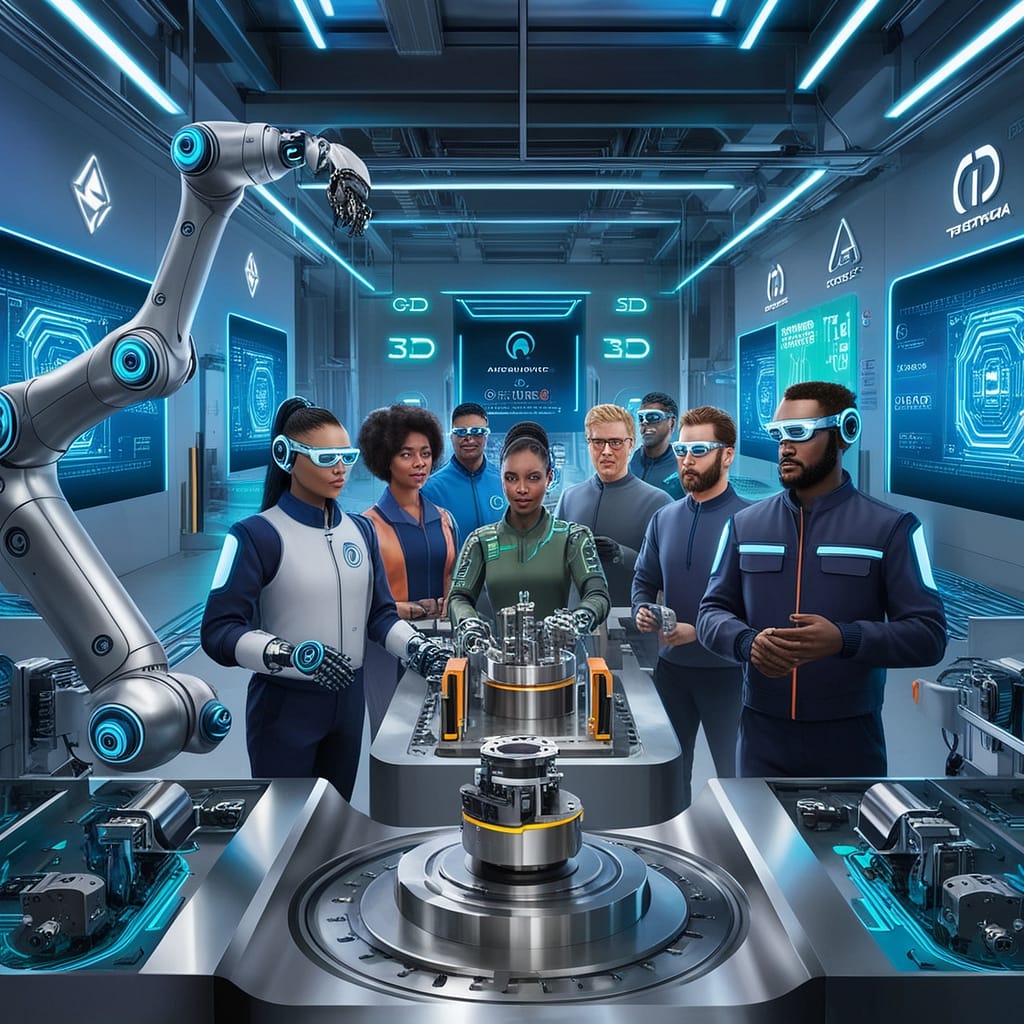In today’s fast-paced world, automation and robotics are at the forefront of technological advancement, transforming various industries and redefining the way we work. From manufacturing to healthcare, these technologies enhance efficiency, improve accuracy, and reduce costs, paving the way for innovative solutions that were once thought to be the stuff of science fiction. This article delves into automation and robotics, exploring their applications, benefits, and future potential.
1. Understanding Automation and Robotics 🤖
- Automation refers to the use of technology to perform tasks and processes with minimal human intervention. This can range from simple machines to complex systems controlled by software.
- Robotics involves the design, construction, operation, and use of robots—machines capable of carrying out a series of tasks autonomously or semi-autonomously.
2. Key Applications 🏭
- Manufacturing: Automation and robotics revolutionized the manufacturing industry with assembly line robots, enabling high-volume production with consistent quality. This has led to shorter lead times and reduced labor costs.
- Healthcare: Robotics has transformed surgical procedures with precision robotic systems, allowing surgeons to perform minimally invasive surgeries. Additionally, robotic exoskeletons assist patients in physical rehabilitation.
- Logistics and Supply Chain: Automated systems and robots streamline inventory management, packaging, and shipping processes. Companies like Amazon use robotic technology to optimize warehouse operations, improving efficiency and delivery speeds.
- Agriculture: Robotics and automation are making waves in agriculture through smart farming practices. Autonomous tractors and drones enhance crop monitoring and harvesting, leading to increased yields and reduced labor.
- Customer Service: Chatbots and AI-driven automation tools are reshaping customer service by providing instant responses to queries, enhancing user experience, and reducing wait times.
3. Benefits 🌟
- Increased Efficiency: Automation technologies operate faster and more accurately than humans, significantly boosting productivity.
- Cost Reduction: With lower labor costs and minimized errors, businesses can achieve substantial savings, allowing for reinvestment in other areas.
- Safety: Robots can perform dangerous tasks, reducing the risk of workplace accidents and injuries. This is especially important in hazardous environments like construction sites or chemical plants.
- Data Collection and Analysis: Automated systems gather vast amounts of data, providing insights that help companies make informed decisions and optimize processes.
- Enhanced Quality Control: Robots operate with high precision and consistency, improving the overall quality of products and services.
4. Challenges and Considerations ⚠️
While automation and robotics offer numerous advantages, several challenges must be addressed:
- Job Displacement: The rise of automation has raised concerns about job loss. Retraining and reskilling workers for new roles is essential to mitigate this impact.
- High Initial Investment: Implementing robotic systems can require significant capital investment, which may be a barrier for small and medium-sized enterprises.
- Dependence on Technology: Increased reliance on automated systems can pose risks, including potential system failures and vulnerabilities to cyber attacks.
- Ethical Considerations: As robots become more autonomous, ethical dilemmas arise regarding decision-making, especially in sensitive areas like healthcare and law enforcement.
5. The Future of Automation and Robotics 🚀
The future of automation and robotics is bright, with ongoing advancements in artificial intelligence, machine learning, and sensor technology. Key trends include:
- Collaborative Robots (Cobots): These robots are designed to work alongside humans, sharing workspaces and enhancing productivity without replacing human jobs.
- Smart Automation: The integration of AI with automation systems is leading to smarter, adaptive solutions capable of learning and improving over time.
- Internet of Things (IoT): Automation is increasingly intertwined with IoT technologies, enabling real-time monitoring and control of devices and processes.
- Sustainable Solutions: Automation technologies can contribute to sustainability by optimizing resource usage and reducing waste in various industries.
Conclusion
Automation and robotics are reshaping our world, driving efficiency and innovation across multiple sectors. While challenges remain, the potential benefits of these technologies are immense. By embracing automation and robotics, businesses can not only thrive in a competitive landscape but also create a safer, more productive, and sustainable future for all. 🌍✨



